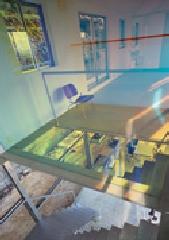The single-family house, the jewel of the crown of architecture since 19th century, constitutes a fine and subtle transmissor and detector of changes'by adopting the formal, technical and theorical advances in architecture, but also by being responsive to the social and cultural changes of the times.
The house incorporates and reacts to the mutations imposed by the globalization, the spread of the new technologies and the environmental, social and financial crisis from the 21st century. In contraposition to the globalization, a new
approach arises to recover the traditional and ancient building knowledge. In contraposition to the single-family house for the highest social classes, comes that from lower classes, with tight budgets, who do not want to give up their domestic dreams.

(0 Comentarios)